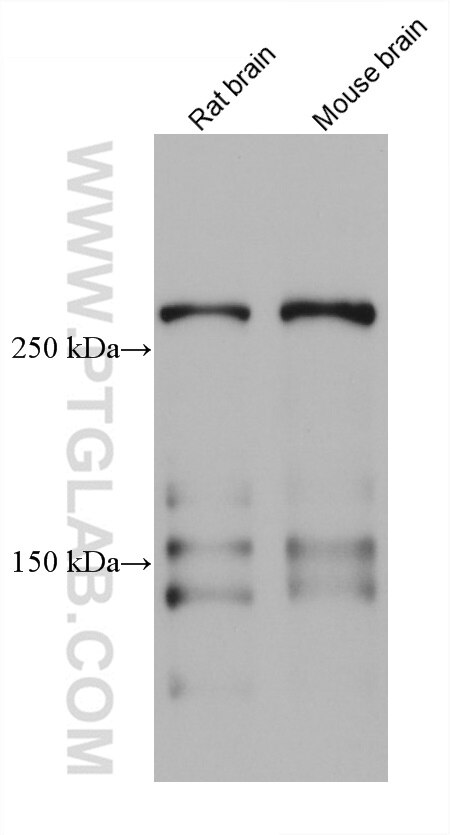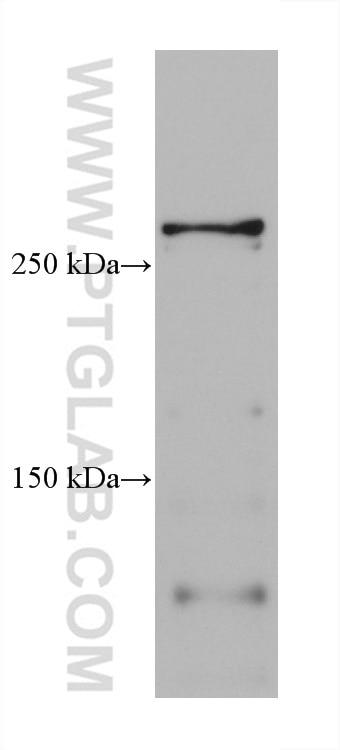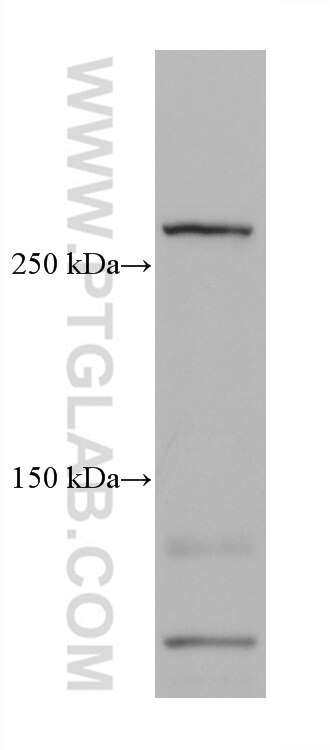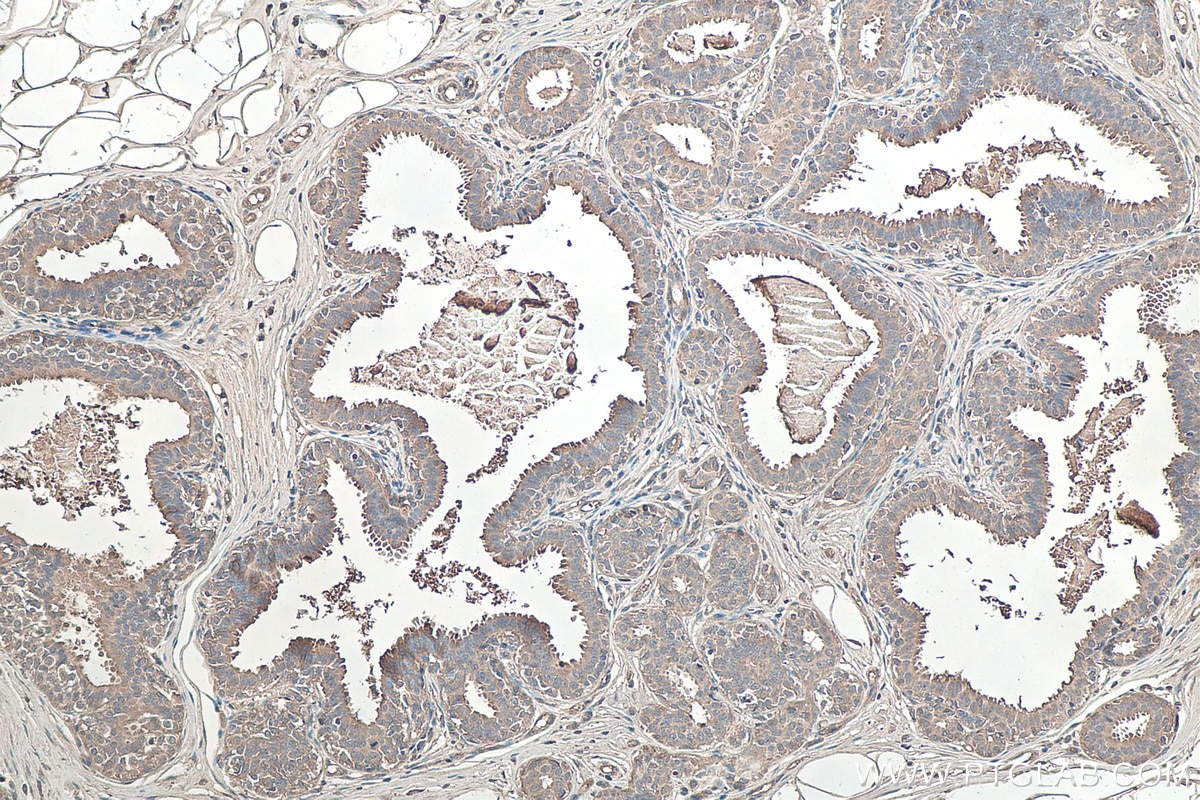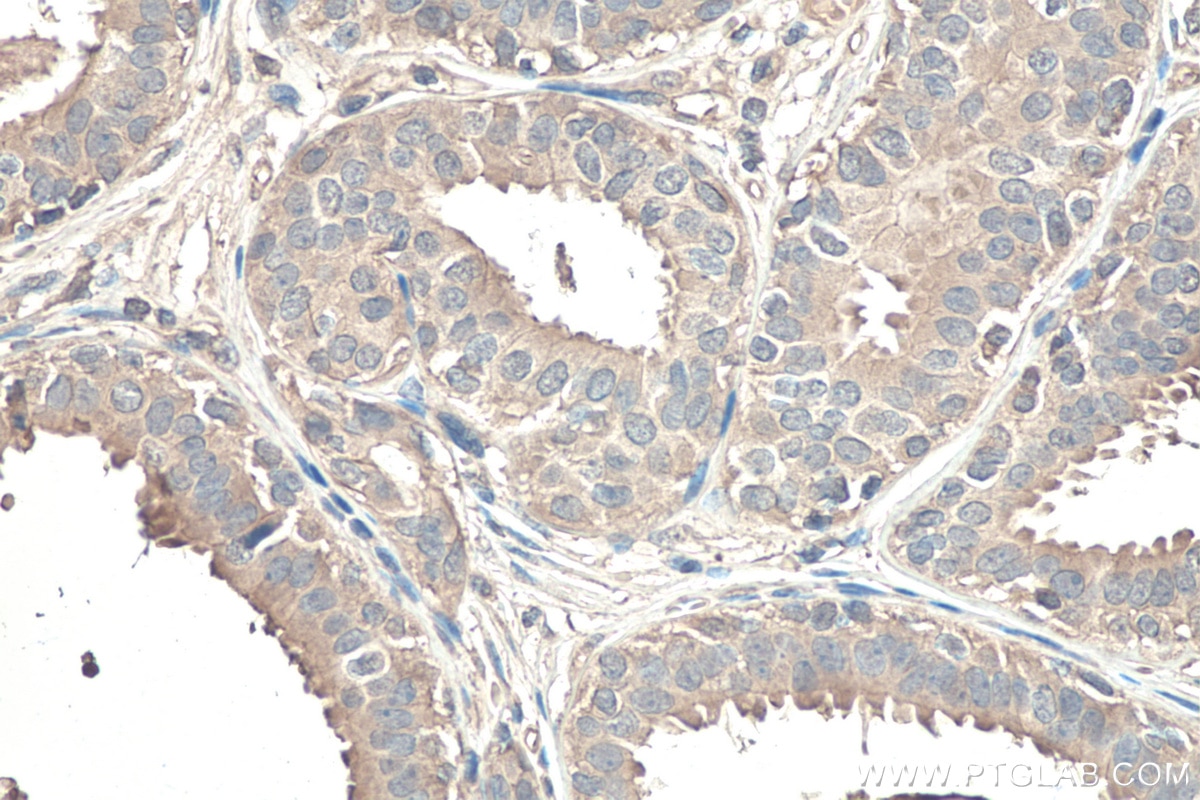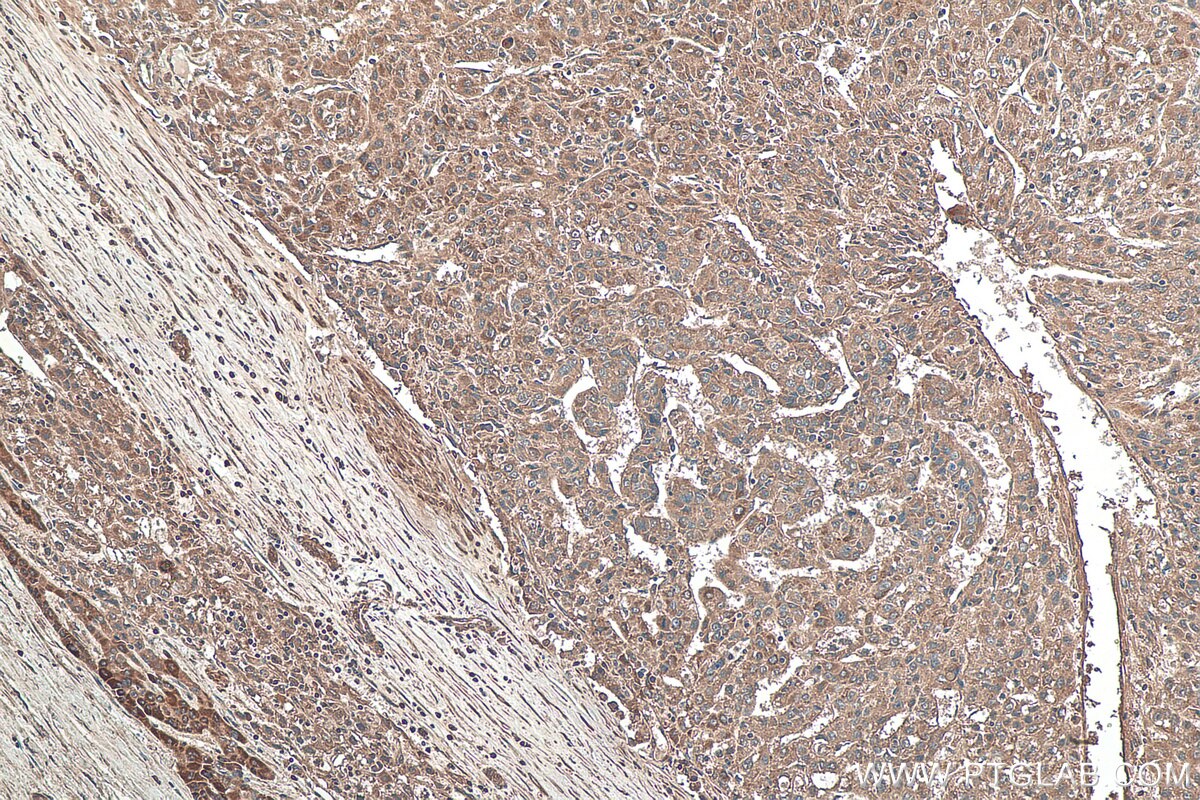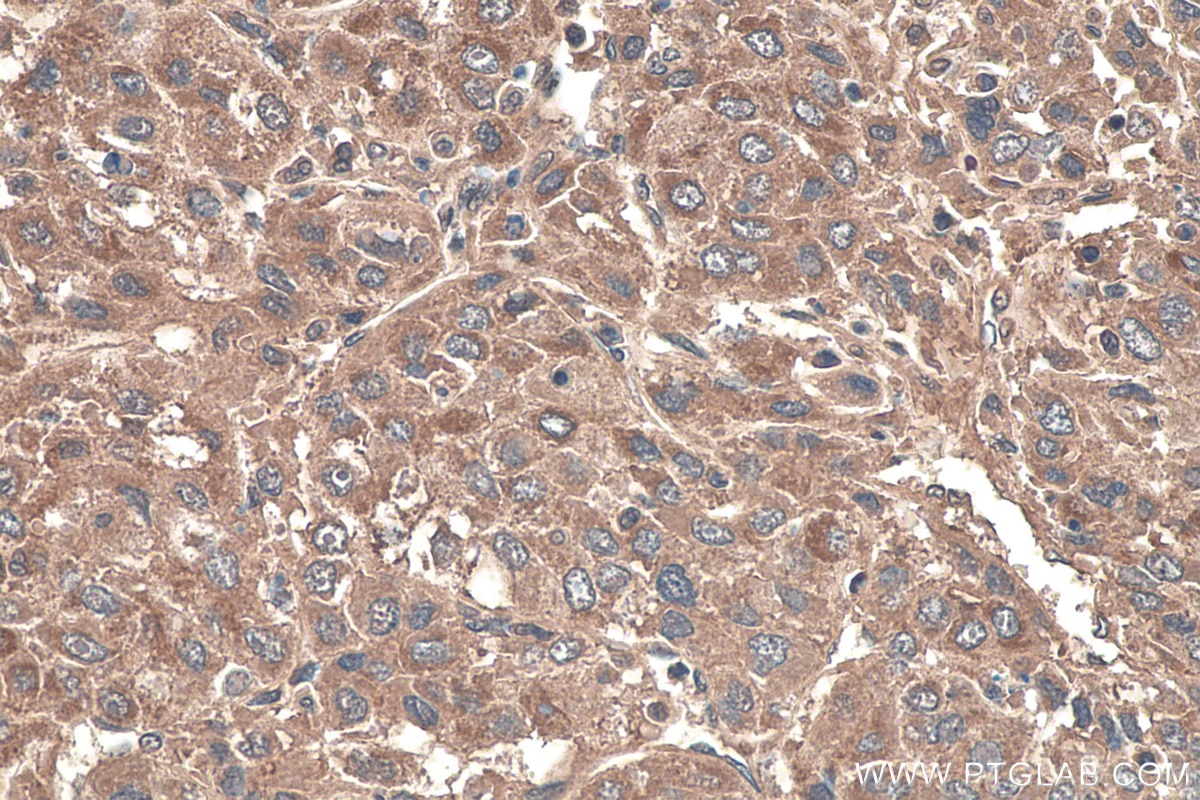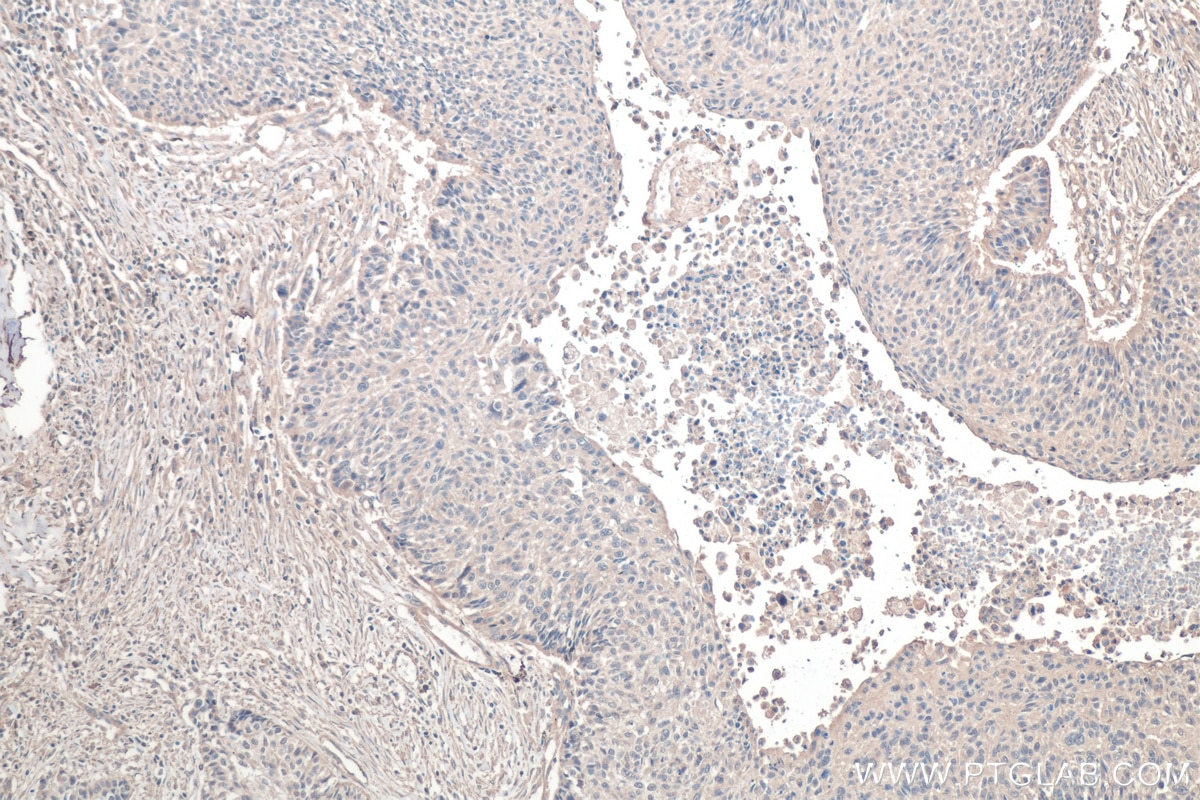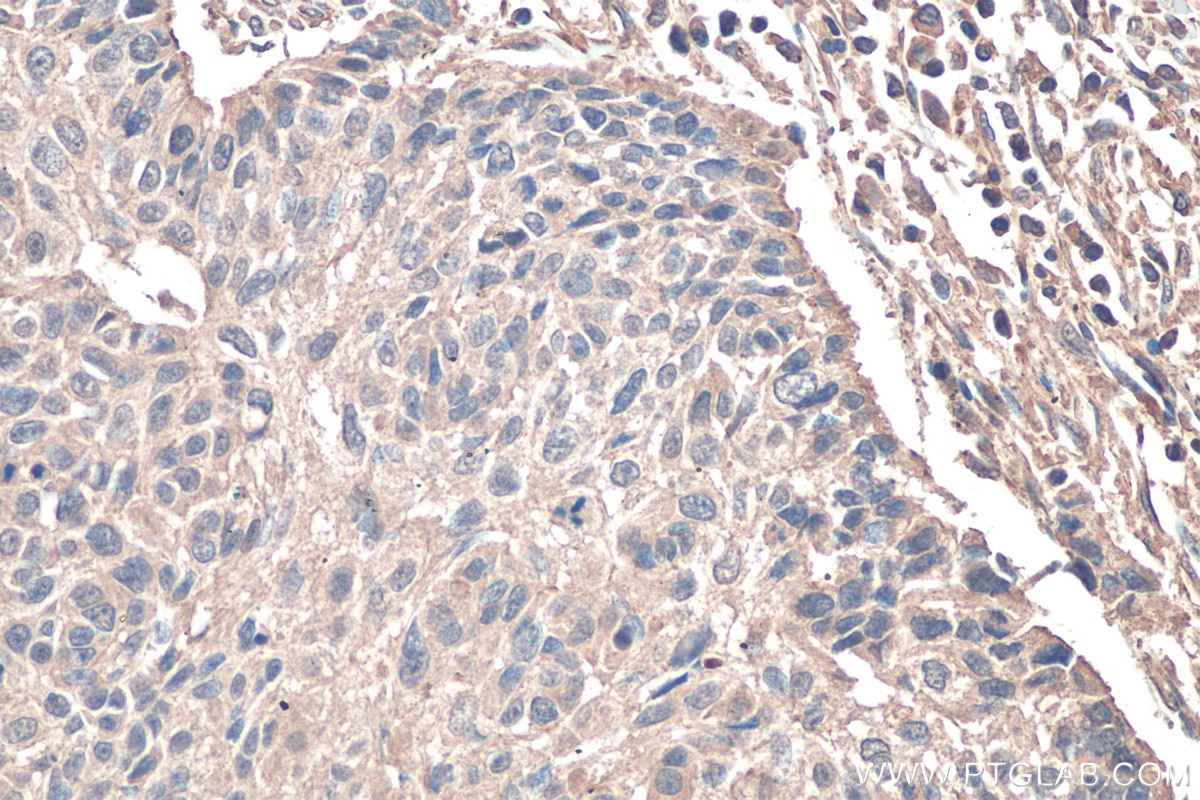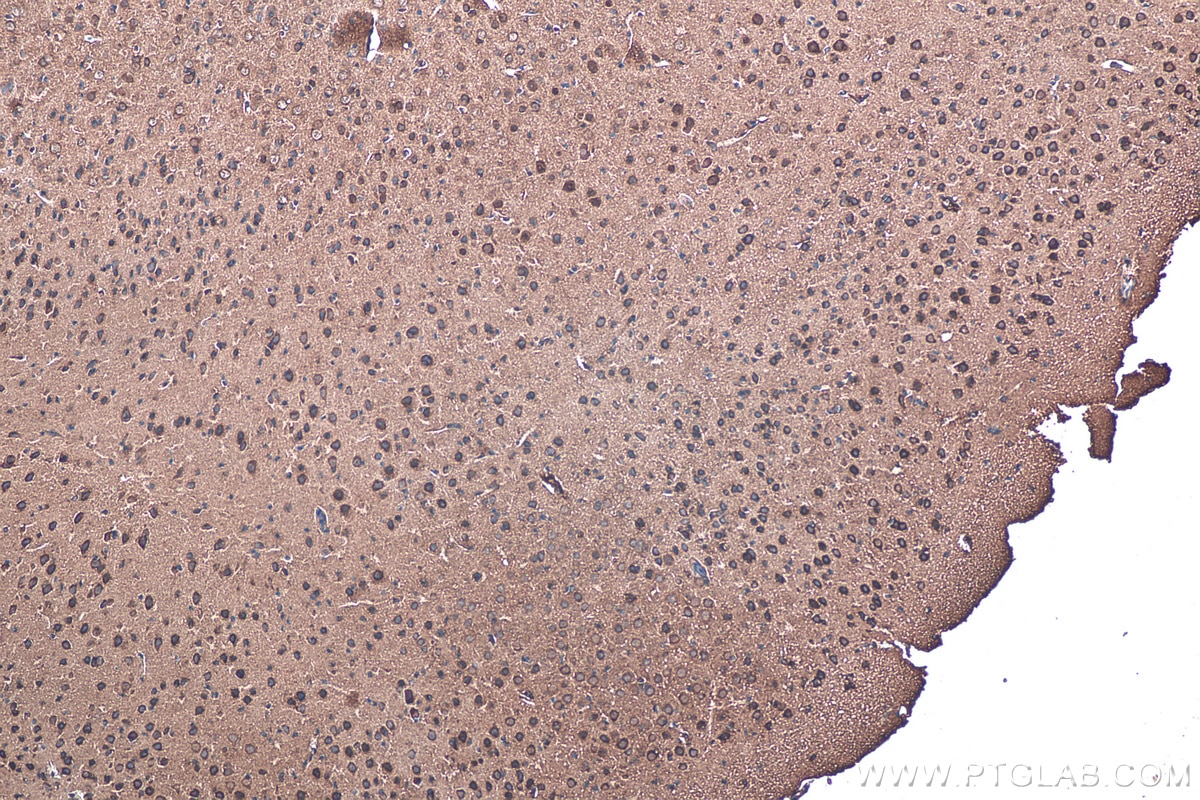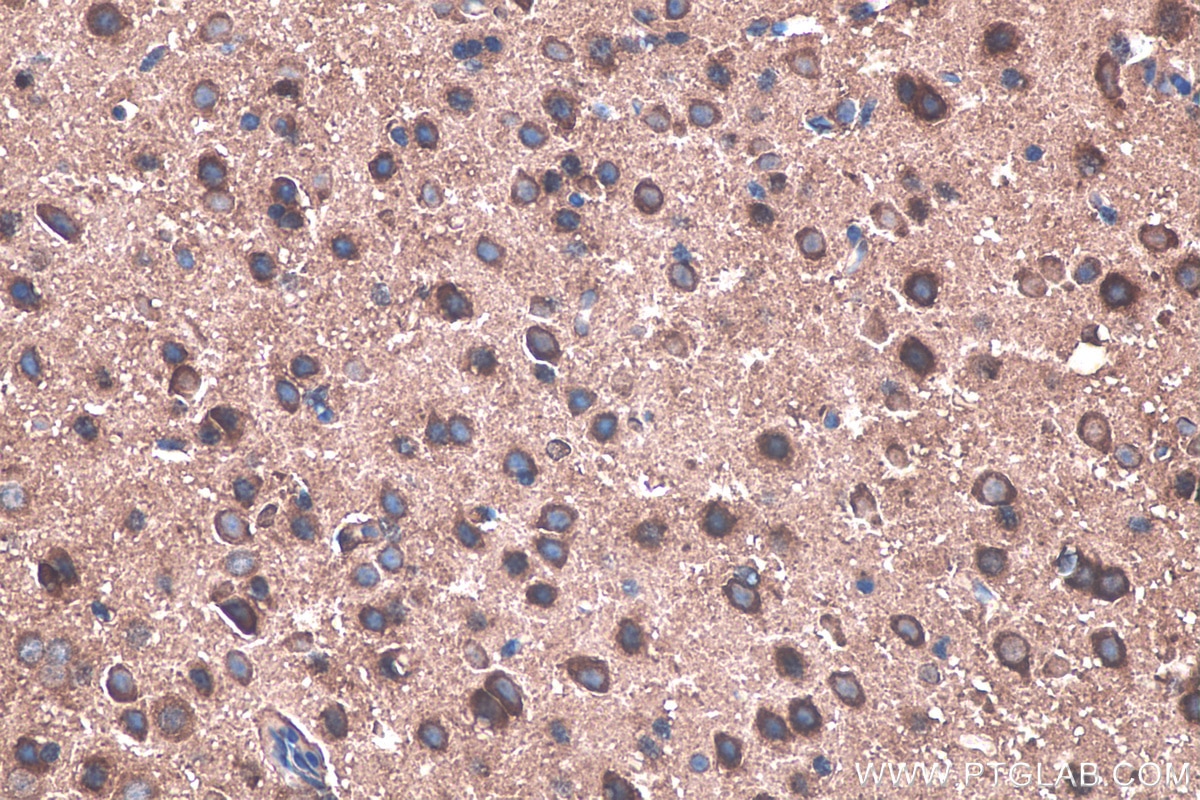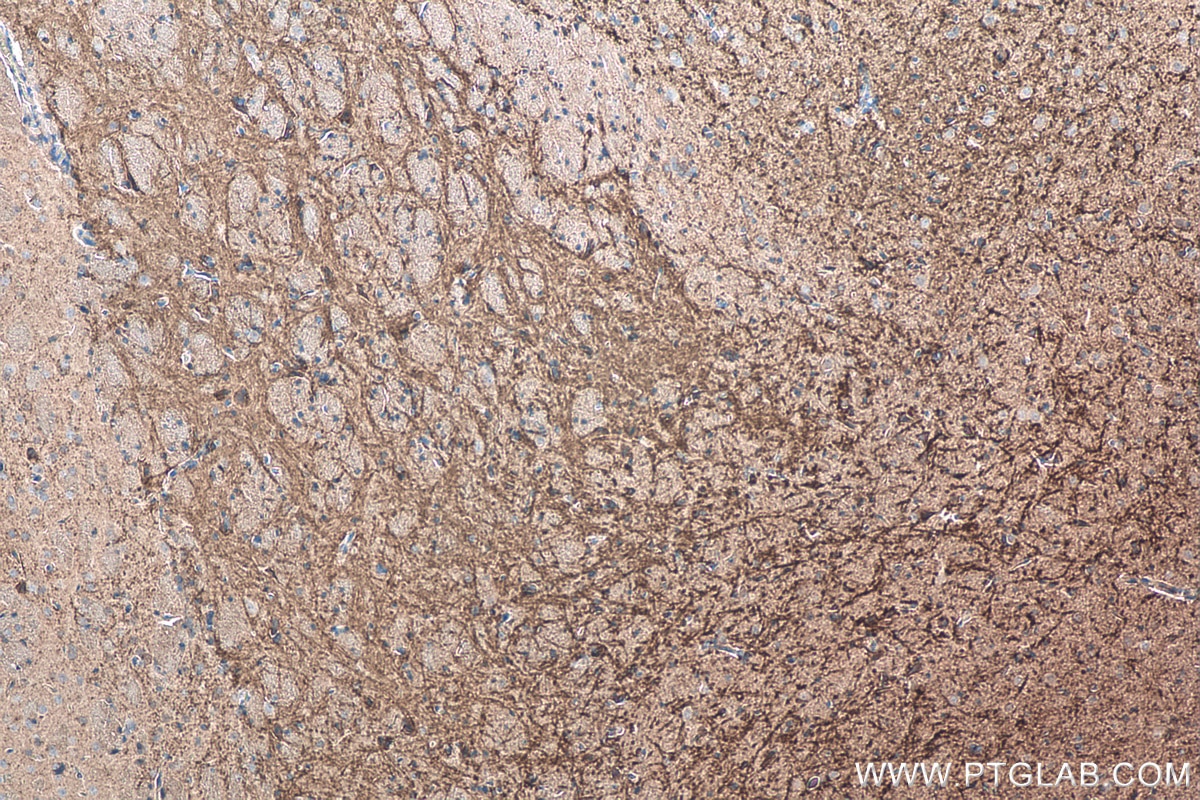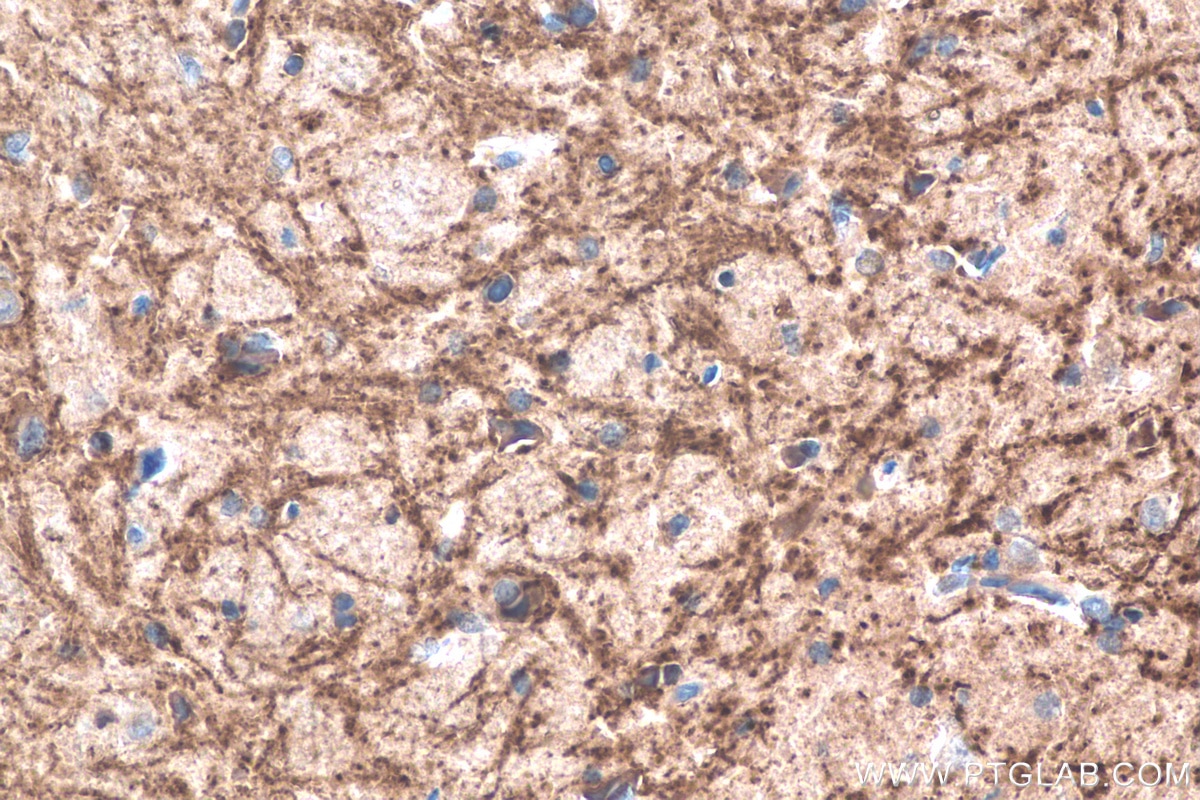Tested Applications
| Positive WB detected in | rat brain tissue, HEK-293 cells, rat cerebellum tissue, mouse brain tissue |
| Positive IHC detected in | human breast cancer tissue, human liver cancer tissue, human lung cancer tissue, mouse brain tissue, rat brain tissue Note: suggested antigen retrieval with TE buffer pH 9.0; (*) Alternatively, antigen retrieval may be performed with citrate buffer pH 6.0 |
Recommended dilution
| Application | Dilution |
|---|---|
| Western Blot (WB) | WB : 1:2000-1:10000 |
| Immunohistochemistry (IHC) | IHC : 1:500-1:2000 |
| It is recommended that this reagent should be titrated in each testing system to obtain optimal results. | |
| Sample-dependent, Check data in validation data gallery. | |
Published Applications
| WB | See 9 publications below |
| IHC | See 3 publications below |
| IF | See 5 publications below |
Product Information
67710-1-Ig targets TNC/Tenascin-C in WB, IHC, IF, ELISA applications and shows reactivity with Human, Mouse, Rat samples.
| Tested Reactivity | Human, Mouse, Rat |
| Cited Reactivity | human, mouse, rat |
| Host / Isotype | Mouse / IgG1 |
| Class | Monoclonal |
| Type | Antibody |
| Immunogen |
CatNo: Ag21412 Product name: Recombinant human TNC protein Source: e coli.-derived, PET28a Tag: 6*His Domain: 1852-2201 aa of BC151843 Sequence: YALTDLEPATEYTLRIFAEKGPQKSSTITAKFTTDLDSPRDLTATEVQSETALLTWRPPRASVTGYLLVYESVDGTVKEVIVGPDTTSYSLADLSPSTHYTAKIQALNGPLRSNMIQTIFTTIGLLYPFPKDCSQAMLNGDTTSGLYTIYLNGDKAEALEVFCDMTSDGGGWIVFLRRKNGRENFYQNWKAYAAGFGDRREEFWLGLDNLNKITAQGQYELRVDLRDHGETAFAVYDKFSVGDAKTRYKLKVEGYSGTAGDSMAYHNGRSFSTFDKDTDSAITNCALSYKGAFWYRNCHRVNLMGRYGDNNHSQGVNWFHWKGHEHSIQFAEMKLRPSNFRNLEGRRKRA Predict reactive species |
| Full Name | tenascin C |
| Calculated Molecular Weight | 2201 aa, 241 kDa |
| Observed Molecular Weight | 260 kDa |
| GenBank Accession Number | BC151843 |
| Gene Symbol | Tenascin C |
| Gene ID (NCBI) | 3371 |
| RRID | AB_2882900 |
| Conjugate | Unconjugated |
| Form | Liquid |
| Purification Method | Protein G purification |
| UNIPROT ID | P24821 |
| Storage Buffer | PBS with 0.02% sodium azide and 50% glycerol, pH 7.3. |
| Storage Conditions | Store at -20°C. Stable for one year after shipment. Aliquoting is unnecessary for -20oC storage. 20ul sizes contain 0.1% BSA. |
Background Information
Tenascin-C (TNC) is a large hexameric extracellular matrix glycoprotein of the tenascin family (PMID: 21818551). It is a multimodular protein containing multiple epidermal growth factor (EGF)-like repeats and fibronectin type III (FN III) domains (PMID: 1719530). Tenascin-C is highly expressed during embryonic development, particularly in the developing central nervous system, around motile cells and at epithelial-mesenchymal interaction sites (PMID: 25738825). In adult tissues, the expression and the distribution of TNC are typically limited under normal physiological conditions. It is upregulated during injury, inflammation, regeneration, and cancer (PMID: 7694605; 25120494). Tenascin-C is a diverse protein that can produce different functions including regulating cell adhesion, migration and proliferation.
Protocols
| Product Specific Protocols | |
|---|---|
| IHC protocol for TNC/Tenascin-C antibody 67710-1-Ig | Download protocol |
| WB protocol for TNC/Tenascin-C antibody 67710-1-Ig | Download protocol |
| Standard Protocols | |
|---|---|
| Click here to view our Standard Protocols |
Publications
| Species | Application | Title |
|---|---|---|
Oxid Med Cell Longev Eugenol-Preconditioned Mesenchymal Stem Cell-Derived Extracellular Vesicles Promote Antioxidant Capacity of Tendon Stem Cells In Vitro and In Vivo. | ||
Adv Mater Piezoelectric Injectable Anti-Adhesive Hydrogel to Promote Endogenous Healing of Tendon Injuries | ||
QJM Shengmai Jianghuang San Enhances Radiosensitivity of Hypoxic Nasopharyngeal Carcinoma by Inhibiting Cancer Stemness | ||
Arthritis Rheumatol Critical role for Transglutaminase 2 in scleroderma skin fibrosis and in the development of dermal sclerosis in a mouse model of scleroderma | ||
Front Endocrinol (Lausanne) Identification of diagnostic markers related to oxidative stress and inflammatory response in diabetic kidney disease by machine learning algorithms: Evidence from human transcriptomic data and mouse experiments | ||
Heliyon PMMA-induced biofilm promotes Schwann cells migration and proliferation mediated by EGF/Tnc/FN1 to improve sciatic nerve defect |
Reviews
The reviews below have been submitted by verified Proteintech customers who received an incentive for providing their feedback.
FH Balawant (Verified Customer) (12-02-2022) | This antibody is great for western blot as well as for Immunofluorescence.
|

